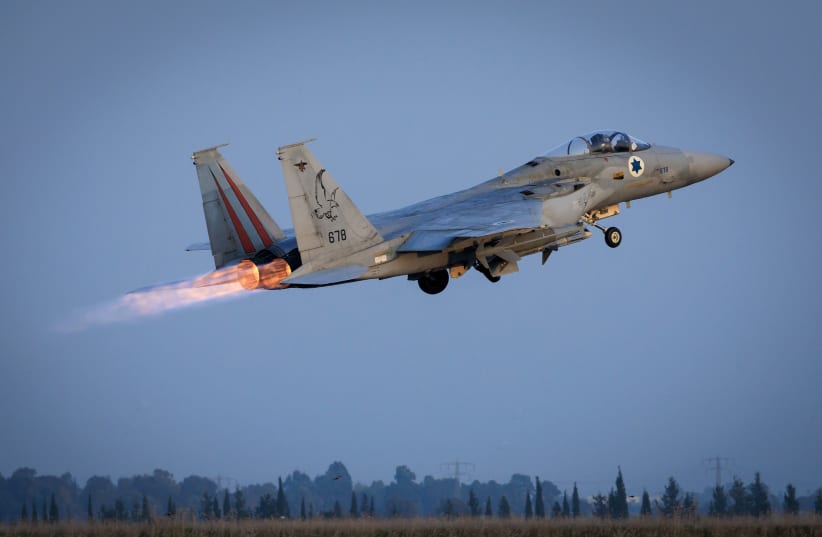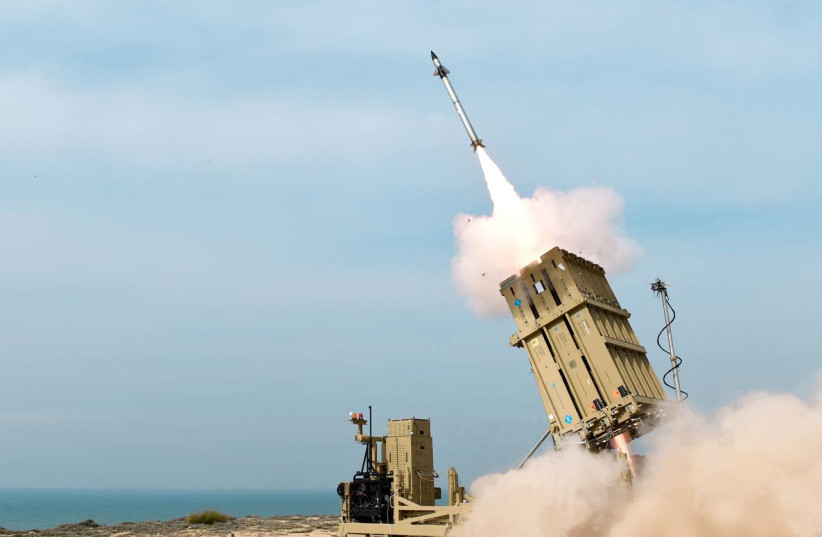Over recent decades, Israel’s defense establishment has invested billions in preparing for a potential strike on Iran, developing specialized munitions along the way. Some of these capabilities were only revealed after being sold to foreign air forces. Here’s what can be disclosed amidst these preparations.
Last month, Israel conducted another strike in Yemen, deploying F-15 jets from a base 1,800 kilometers away, showcasing its renowned improvisation skills. These aircraft, initially designed for air combat, were modified in Israel for strike missions. The Israeli Air Force also equipped them to carry modern munitions from both American and Israeli manufacturers.
However, an attack on Iran presents a far more complex challenge, despite the similar distance.
Iran’s nuclear facilities and ballistic missile bases are deeply embedded underground, in contrast to less-protected targets like oil terminals. Additionally, Iran operates an advanced air defense system, primarily domestically developed. According to their claims, yet to be tested, this system matches the capabilities of Russian systems like the S-300, which can intercept missiles launched by Israel. However, the Israeli-attributed strike on Isfahan after Iran’s April attack was not intercepted by these advanced defenses. Iran also maintains an outdated fleet, including Russian MiG-29s and American F-14s from the Shah’s era, which continue to operate despite international sanctions.
In light of these challenges, Israel’s defense forces have spent 20 years preparing for a possible strike on Iran, investing billions of dollars and shekels. This investment includes developing specialized munitions, some of which even the US declined to sell to Israel, as well as innovations not available to the US.
Striking from 1,800 km away
Strikes at a range of about 2,000 kilometers are typically carried out by American and Russian forces using cruise missiles and bombers. Israel, however, has allocated significant portions of its US aid to acquiring fighter jets capable of flying two hours each way – ranging from the advanced F-15I squadron to four F-16I Sufa squadrons.
Lockheed Martin developed conformal fuel tanks specifically for these jets, enhancing their range without significantly affecting aerodynamics or radar signature.
Foreign reports indicate that Israel has developed detachable fuel tanks for F-35 jets, enabling them to reach Iran while maintaining stealth capabilities. Without these, their range is insufficient, and standard under-wing tanks compromise much of their stealth.
Long-range attack missiles
In the late 2000s, Israel’s defense industries unveiled two long-range attack missiles launched from fighter jets. While details like their precise range remain unclear, it’s known that they have a range of hundreds of kilometers, allowing strikes from outside the range of Iranian defenses. These missiles travel at supersonic speeds, reducing enemy alert times and complicating interception efforts, increasing their chances of hitting the target.
Rampage missile
The Rampage, developed in a collaboration between Israel Aerospace Industries (IAI) and Elbit Systems, is based on Elbit’s EXTRA rocket. Initially designed for ground launch, the Rampage was adapted for air deployment, gaining increased range and speed when launched from jets. It features multiple navigation systems, providing redundancy for accurate targeting.
With a length of 4.7 meters, a diameter of 30.6 cm, and a weight of 570 kg, it carries a 150 kg warhead, making it effective against missile batteries, command centers, and other critical targets. It can be launched from Israel’s F-15, F-16, and F-35 aircraft. Its reliance on existing rocket technology makes it relatively affordable, estimated at a few hundred thousand dollars per unit.
Rocks missile
The Rocks missile, unveiled by Rafael Advanced Defense Systems in 2019, combines supersonic cruise capabilities with satellite and inertial navigation, as well as optical targeting. It is based on Rafael’s Anchor missile, which mimics the Iranian Shahab missile in speed and maneuverability for testing purposes.
The Rocks can be launched from smaller F-16 jets and potentially the F-35. Foreign assessments suggest it has a range of 300 km and can carry a 500 kg warhead, making it capable of targeting fortified or underground structures.
Additional developments
Foreign sources indicate that Israel has a surface-to-surface missile system, equipped with both conventional and nuclear warheads, known as the Jericho missiles. Despite the hundreds of ballistic missiles Iran has launched towards Israel, the likelihood of Israel using these missiles in a strike appears low. These missiles were initially developed by the French Dassault company, later upgraded by IAI.
Israel maintains a policy of ambiguity regarding its capabilities in this area, often announcing “rocket propulsion tests” during launches from its Palmachim base. However, the 1988 unveiling of the Shavit satellite launcher confirmed Israel’s long-range ballistic capabilities, as any satellite launcher can be adapted for military use. Thus, these missiles are expected to remain off the table for now.
Additionally, Elbit has developed bunker-busting bombs, named 500 MPR, capable of penetrating up to four meters of concrete. These bombs, tested on F-15I jets, have a shorter range, reaching a few dozen kilometers based on the method of deployment.
PopEye Turbo
Another Israeli weapon, known only from foreign reports, is the PopEye Turbo cruise missile, developed by Rafael with a range of 1,500 km. It is designed for launch from Israeli Navy submarines and is capable of carrying both conventional and nuclear warheads. This range allows Israeli submarines to strike Iran from the Red Sea or the Arabian Sea without entering the Persian Gulf.
Exporting these advanced munitions to trusted foreign customers allows Israeli companies to reinvest in missile and bomb development, reducing the costs for Israel’s Defense Ministry. It is likely that undisclosed munitions are stored in Israeli Air Force warehouses, waiting for the right moment.

